Nowadays, it is a more practical decision to use recessed lighting. However, when it comes to picking the size of your recessed lights, a key decision point emerges: 4 inch vs 6 inch recessed lighting. In this article, we will take a deeper dive into the differences between these sizes.
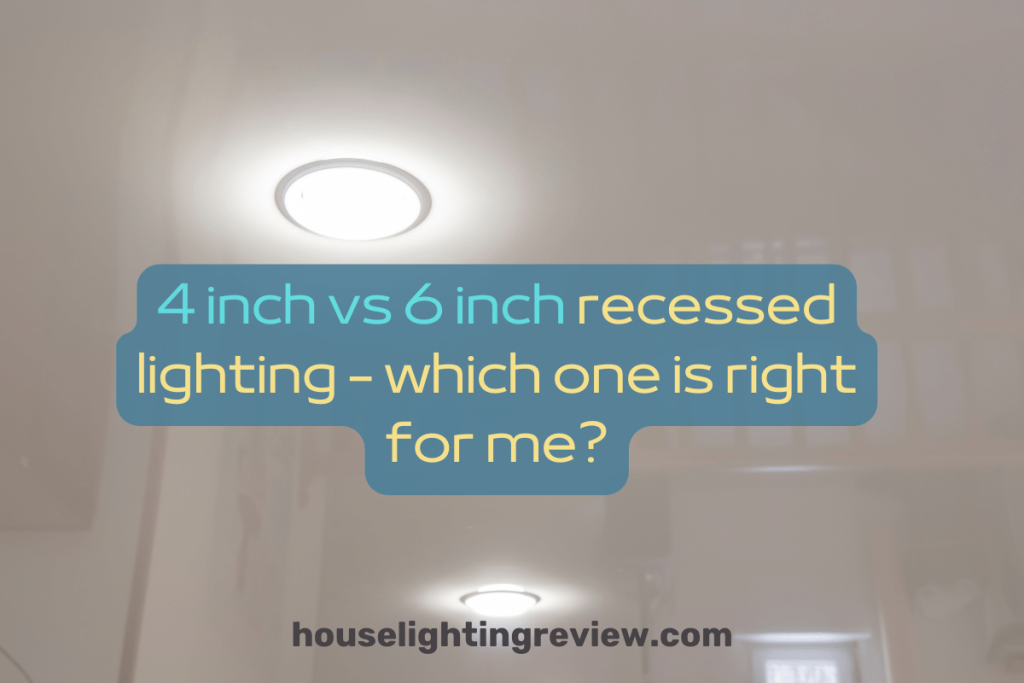
What are the types of recessed lighting?
Let’s first explore the broader spectrum of recessed lighting types. These include incandescent, fluorescent, LED, and more.
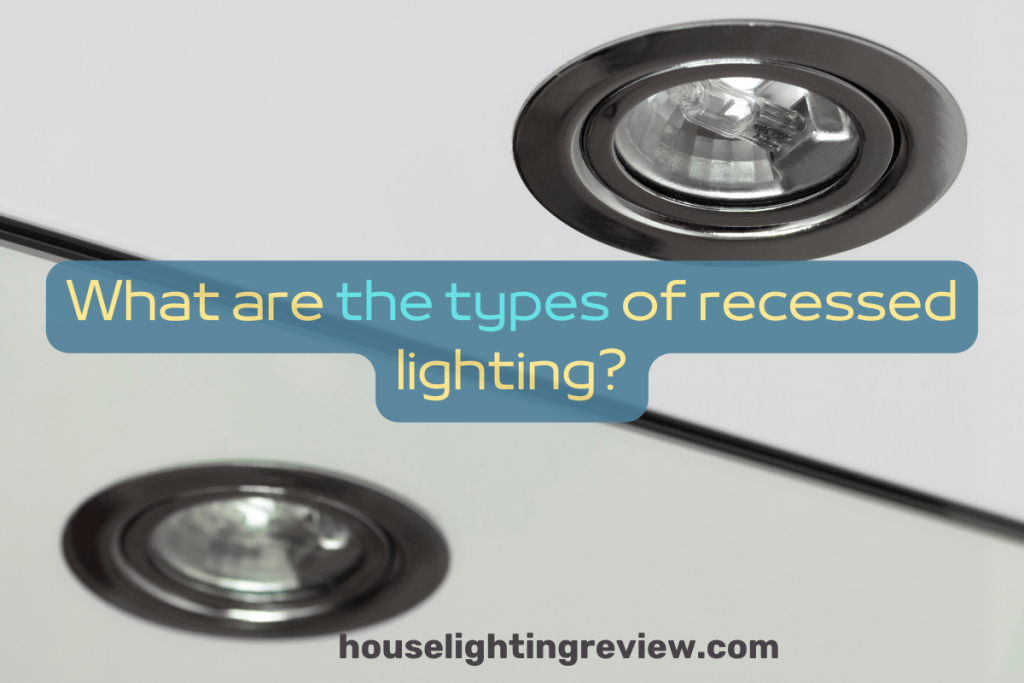
Each type offers unique characteristics, such as energy efficiency, color temperature, and lifespan.
How much light do they provide?

The amount of illumination a recessed lighting fixture provides depends on some factors, including bulb wattage, beam angle, and the fixture’s size. Both 4-inch and 6-inch recessed lighting can deliver a range of lighting levels.
4 inch vs 6 inch recessed lighting, what is the difference?
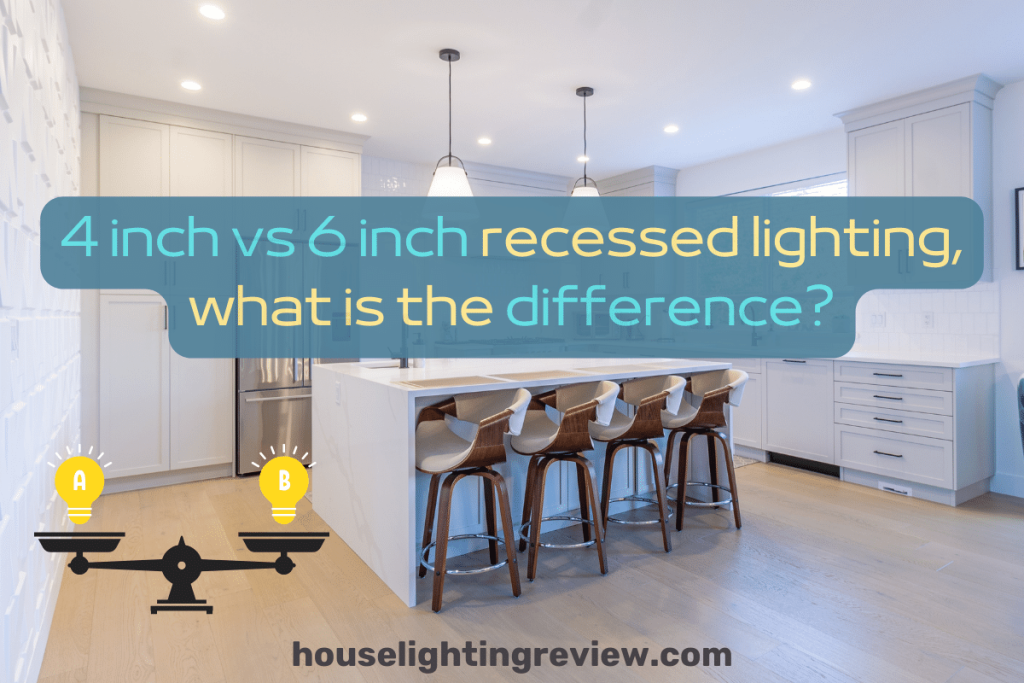
Let’s delve into the differences between these two sizes:
Makes a room look bigger
Smaller spaces like cozy bedrooms or intimate dining areas can greatly benefit from 4-inch recessed lighting. These fixtures emit a soft, focused light and help make the room look bigger.
Conversely, 6-inch recessed lighting is better suited for larger spaces or those with higher ceilings. Their wide beam angle and increased light output can make spacious rooms feel cozier and well-lit.
Focused light
4-inch recessed lights’ compact size and concentrated beam of light make them ideal for drawing attention to specific features.
While 6-inch recessed lights offer a broader beam angle and are often chosen for general lighting, they can still be effectively used for focus light.
Energy saving
If energy conservation is a priority, 4-inch recessed lighting is typically designed with lower-wattage bulbs and consumes less electricity.
While 6-inch recessed lights may consume slightly more power due to their higher wattage, bulbs can often result in better energy utilization.
It’s essential to transition away from standard incandescent light bulbs and instead opt for more eco-friendly alternatives like LED or CFL bulbs.
Light up dark surfaces
In spaces where you need to accentuate smaller dark areas, 4-inch recessed lighting excels. 4-inch recessed lighting creates an inviting atmosphere and adds depth to your room’s design.
6-inch recessed lighting is the preferred choice when faced with larger dark surfaces or entire rooms that require comprehensive illumination.
Wall washing will make your room appear large

Utilizing 4-inch recessed lighting for wall washing is a successful way to make your room seem larger.
This technique minimizes the contrast between illuminated and shadowed surfaces, creating an optical illusion of expanded space. 4-inch recessed lights help eliminate the boundaries of your space.
6-inch recessed lighting fixtures, with their wider beam angles and increased light output, can cast light uniformly over larger surfaces, such as those found in spacious large rooms.
General lighting

While 4-inch recessed lighting is often associated with accent and task lighting due to its focused beams, it can also play a role in general lighting.
The discreet and compact nature of 4-inch ceiling recessed lighting allows them to blend seamlessly into the ceiling while delivering a soft and inviting ambient glow.
6-inch recessed lighting fixtures are a natural choice for general lighting needs, especially in large rooms or open-concept places.
Save on space
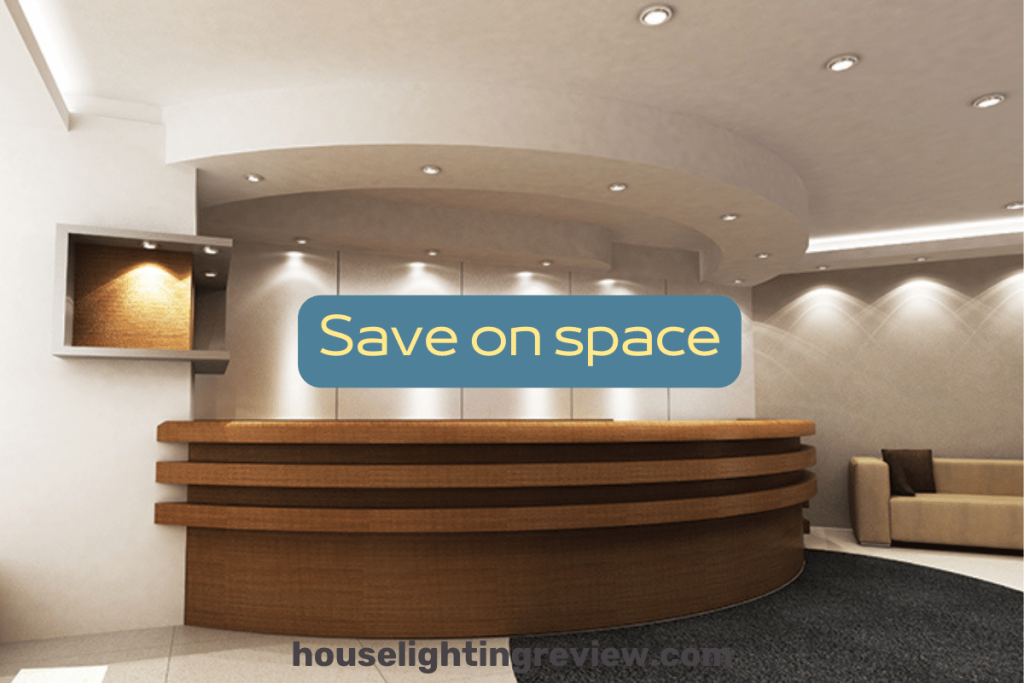
4-inch recessed lighting fixtures have a compact size that minimizes their impact on your ceiling’s visual space.
While 6-inch recessed lighting has a larger physical footprint, they are typically chosen for larger rooms or spaces with higher ceilings.
In the lounge, a strategically placed recessed light casts a warm, inviting glow over the seating area. Recessed light is a well-known choice for modern interiors, offering an elegant and unobtrusive lighting solution.
Lighting control
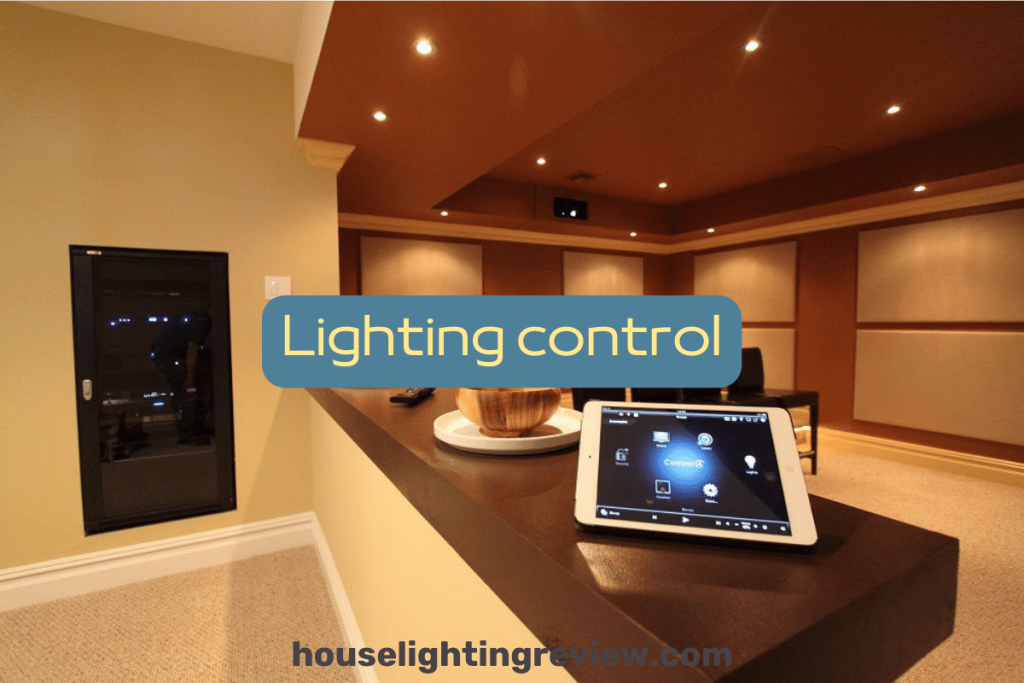
4-inch lighting fixtures can be seamlessly integrated into lighting control systems, offering flexibility in managing the ambiance of a room. These fixtures are compatible with dimmer switches, allowing you to fine-tune the light intensity.
In smaller spaces or rooms with focused effective lighting requirements, the precision afforded by 4-inch recessed lights makes it easier to achieve your desired lighting effect.
Similarly, 6-inch recessed lighting fixtures are also conducive to advanced lighting control systems. Their compatibility with dimmers and smart lighting technologies.
More cost-effective
4-inch recessed lighting is often more cost-effective in multiple aspects. These fixtures are generally less expensive. Additionally, they tend to use lower-wattage bulbs, which results in reduced energy consumption and lower electricity bills over time.
6-inch has potentially higher wattage bulbs, but they can still be cost-effective when used efficiently. Their increased light output means that fewer fixtures are needed to illuminate a given space adequately.
Using two different recessed lighting sizes
Mixing different recessed lighting sizes within the same room can be a strategic and visually appealing approach to lighting design, offering versatility and the ability to create a layered and dynamic lighting scheme.
Using two different sizes in the same room can serve distinct lighting purposes. For example, you can install 4-inch recessed lights for focused or accent lighting to highlight artwork, while simultaneously incorporating 6-inch recessed lights for general illumination.
Recessed wall lighting
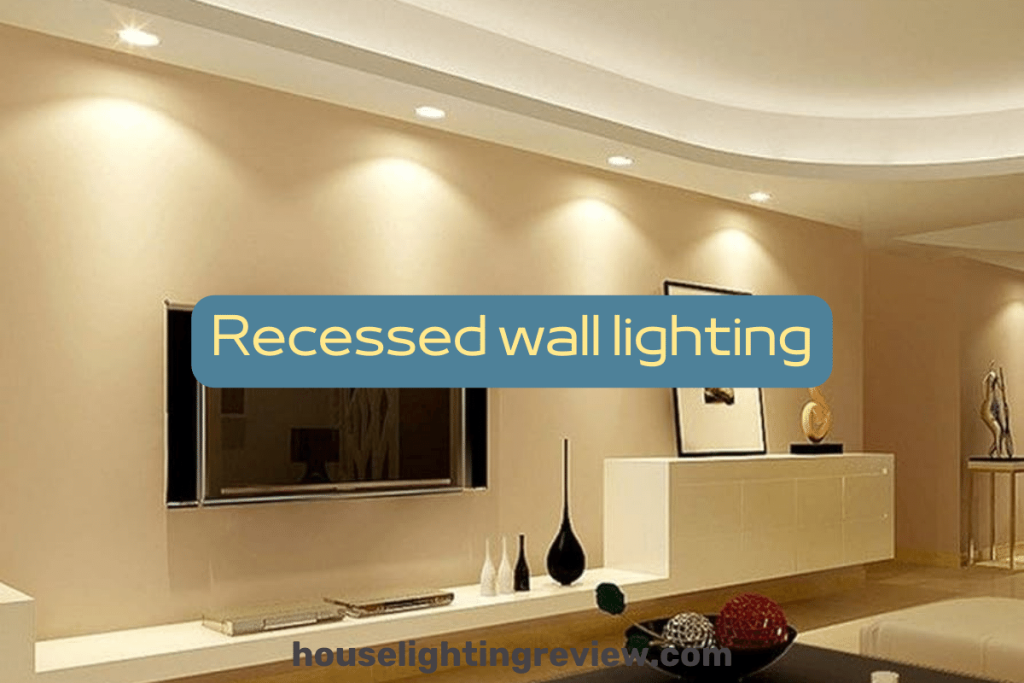
Recessed wall lights are designed to wash walls with a soft, indirect glow. They are excellent for emphasizing textures, highlighting architectural features, or creating an inviting ambiance.
These fixtures can be strategically placed to cast light across walls, creating a captivating play of light and shadow that adds depth and character to your room’s design.
Recessed wall lighting isn’t limited to interior spaces; it can also be used for outdoor lighting.
Ceiling light

The most typical kind of recessed lighting is ceiling lighting. Ceiling lighting fixtures can significantly impact a room’s ambiance and style.
Modern office spaces often feature energy-efficient LED ceiling lights that offer bright and uniform illumination.
In commercial spaces with high ceilings, such as shopping malls, ceiling lighting is essential for providing adequate illumination throughout the area.
Sloped ceilings in the attic bedroom add architectural interest to the space, but their unique angles can pose challenges when installing overhead lighting. Overhead lighting in the bedroom is often complemented by bedside lamps.
Decor goals
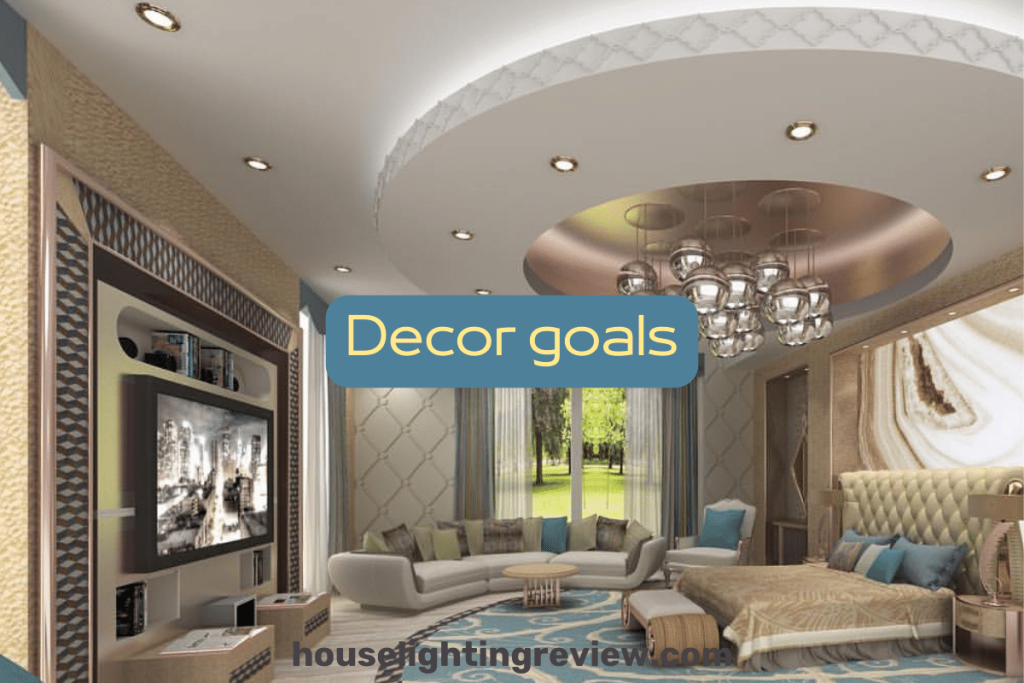
Mixing different sizes allows you to emphasize specific areas or objects while ensuring the overall room is well-lit and aesthetically pleasing.
For example, in a cozy bedroom, 4-inch fixtures with warm, dimmable LED bulbs can create a tranquil and romantic atmosphere. On the other hand, 6-inch fixtures with bright, daylight-toned bulbs can contribute to a fresh and invigorating feel in a modern kitchen.
Recessed lights are commonly used in office environments to produce uniform lights that evenly illuminate workspaces. The conference room utilizes recessed lighting to concentrate light on the meeting table.
Larger recessed light is better for outdoor lighting applications to ensure effective lighting coverage in expansive areas. To install larger recessed light, you should carefully plan the placement, size, and color temperature, so you can create a unified decor scheme that aligns with your vision.
To achieve a dynamic lighting scheme in the open-concept living area, designers incorporate lighting layers that include recessed lights, pendant fixtures, and wall sconces.
Accent lighting
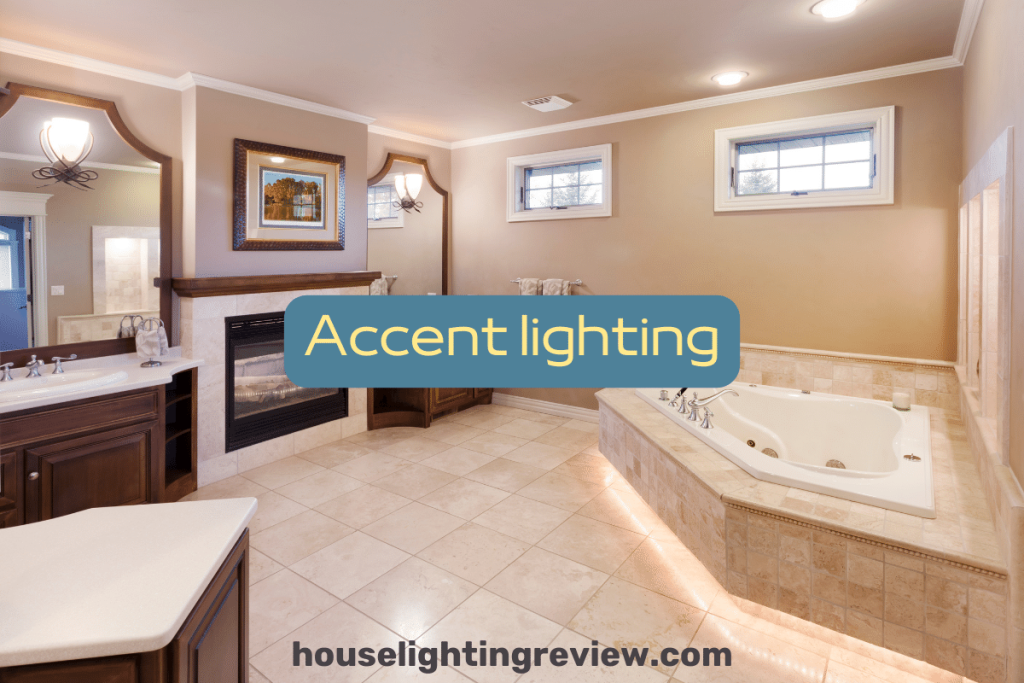
Accent lighting, such as wall sconces and track lights, highlights the artwork and sculptures throughout the art gallery, adding depth and drama to the exhibits.
In the cozy reading nook, accent lighting in the form of adjustable floor lamps creates a cozy and well-lit atmosphere.
The restaurant’s interior design incorporates accent lighting to showcase the elegant stained wood cabinetry, creating a warm and inviting ambiance.
Outdoor gardens come alive in the evening with accent lighting that spotlights trees and architectural features.
FAQ
What is the best size for recessed lighting?
The best size for recessed lighting depends on the specific room size, lighting requirements, and design goals. Generally, 4-inch recessed lights are suitable for smaller spaces, while 6-inch fixtures work well in larger rooms or for general lighting.
Is 6-inch recessed light too big?
Whether a 6-recessed light is too big depends on the room’s dimensions and the intended lighting effect. In spacious areas with high ceilings, 6 fixtures are often appropriate for providing ample, even illumination.
What is the difference between 4 and 6 recessed lighting?
The primary distinction between 4 and 6-recessed lighting is in their size and light output. 4 fixtures are smaller and emit a more focused beam of light, making them ideal for accent or task lighting in compact spaces. In contrast, 6 fixtures are larger, have a wider angle, and are often used for general lighting in larger rooms or open areas.
How many 4-inch recessed lights in a room?
The number of 4-inch recessed lights needed in a room depends on factors such as the room’s size, desired lighting intensity, and spacing between fixtures. In a typical 100-square-foot room, you might require around six to eight fixtures to achieve balanced lighting, but it’s essential to calculate the exact number based on your specific room and lighting design.
Conclusion
In the end, the careful consideration of these factors, such as achieving balanced lighting, using fixtures with the same beam angle, strategically positioning recessed lights to concentrate light, to focus light precisely where it’s needed, can result in a harmonious lighting scheme.
Whether you aim to achieve a brighter light, installing recessed lighting offers an effective solution that can transform any room into a well-lit and inviting space.


